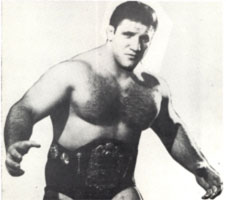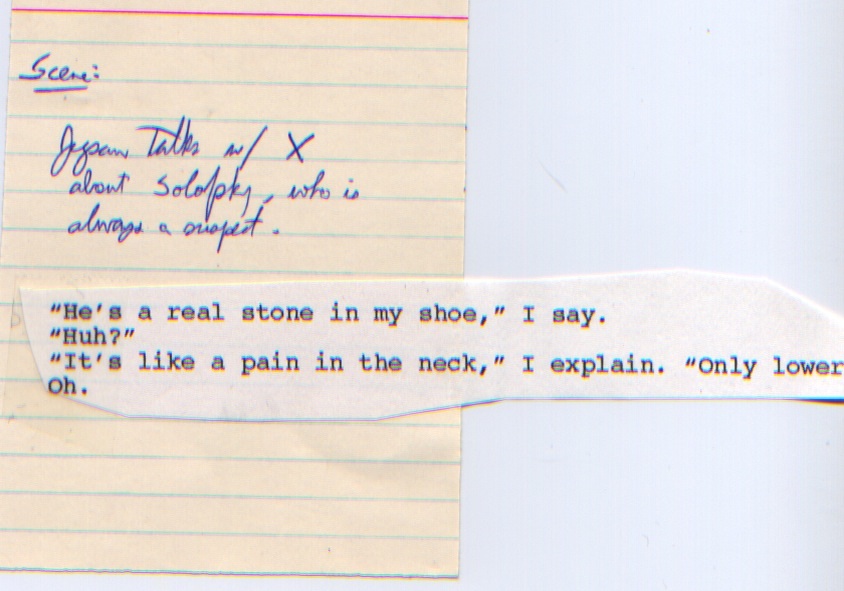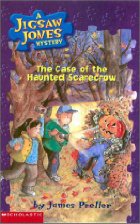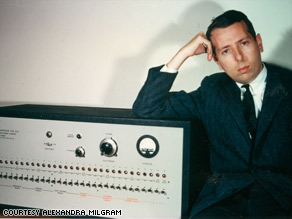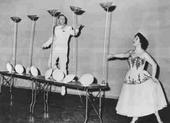Some quick hits today:
* “Ritual” would be too big a word for it, too religious; “tradition” doesn’t feel quite right either. But when I begin a new book, I go to my local CVS and buy one of these bad boys:
Which I did yesterday. It’s more than a little daunting. I don’t know what this book will be about, exactly. I mean, yes, I have some notions, a few seeds, but mostly: a boatload of blank pages and a world of possibilities. Exciting, to venture out into that snow.
* I’m really happy that my fifth-grade son, Gavin, just read and enjoyed this book:
I discovered it over at Literate Lives and the book sounded interesting. So I went to the library and picked up a copy, hoping that it might pass Gavin’s sniff test. I think the baseball on the cover helped. As some sort of boy’s defense mechanism against poetry, Gavin still contends that the book — written in free verse — “wasn’t really poetry so much.” He identified with the main character, who plays piano and baseball; but the book also stretched him in new directions, in terms of format and content. You can read some reviews here and here. Congratulations to first-time author, Ann Burg. You did good.
* I’m plotting a long conversation with author Lewis Buzbee. I just finished reading (and loving!) this book . . .
and I intend to read this one, too . . .
Sometimes you read an author, or a blog, and you just simply like that person. Which is not at all a requirement for liking a book, mind you. Anyway, I’m excited about getting to spend time with Lewis, and I know my Nation of Readers will enjoy him, too.
* I get it, nobody really thinks they have thirty minutes to waste spend watching a video. But think about it. If the time invested inspires you, gives you ideas, colors the way you look at the world, entertains you, than thirty minutes is a low, low price to pay. That is: You do, you really do. I found this over at Talkworthy and all I can say is, make the time. The video is titled “The Art of Possibility” and features a talk given by Benjamin Zander. It will inspire you. And as a parent with three kids who take piano lessons, in a house where music is important and valued, I found it especially relevant. Check. It. Out.
* The next book I’m reading:
* Let me send you away with this great cover of “What’s Going On” by Los Lobos. Silky cool, like the other side of the pillow on a warm summer night.
Archive for September 22, 2009
What’s Going On?
Come to Children’s Book Day @ Washington Irving’s “Sunnyside” in Tarrytown, NY: 9/27
When I was a kid, I used to watch professional wrestling on television. This was before it went big time, before Hulk Hogan and the massive popularity of the WWF and big events on pay-per-view cable. I watched during the era of Bruno Sammartino, Gorilla Monsoon, Killer Kowalski, The Sheik, Ivan Koloff, Pedro Morales, Haystacks Calhoun, and other charismatic brawlers of yesteryear.
One of the events that I found mind-blowing — and happily recreated with friends on rowdy afternoons — was called a “battle royal.” While rules varied from match to match, essentially they would shoehorn about twenty wrestlers into a ring and the last man standing was declared the winner. They eliminated a wrestler either by pin or by hurling him over the ropes and out of the ring.
Like thus:
Good times, good times.
And that’s exactly what you’re likely to see at the 12th Annual Children’s Book Day at Sunnyside, in Tarrytown, New York, a veritable battle royal of sixty children’s book authors and illustrators. There will be petty jealousy, eye pokes, mule kicks, and plenty of blood (that’s right, I’m looking at you, Jean Craighead George).
This year the tag team of Susan Brandes and Beth Vetare-Civitello has put together a spectacular day-long festival for young readers, families, and friends. It’s a happy event in a beautiful location, and I encourage you to make the trip — meet authors and illustrators, get books signed, spend too much money, listen to music, watch performances, stroll the historic grounds . . .
. . . or simply fulfill your blood lust.
Come see Tony Abbott’s superkick . . . Katie Davis’s flying lariat takedown . . . Ed Young’s sleeper hold . . . Wendy Mass and her devastating forearm shiver . . . or the classic “El Kabong” as executed by Mark Teague.
Here’s some more illustrious names you’ll find in the ring: Pam Allyn, Nora Raleigh Baskin, Judy Blundell, Nick Bruel, Alyssa Satin Capucilli, Bruce Degen, Jules Feiffer, Dan Greenburg, James Howe, Susan Jeffers, Peter Lerangis, Gail Carson Levine, Rafe Martin, Jean Marzollo, Barbara McClintock, Lloyd Moss, Bernard Most, Jerry Pinkney, Marisabina Russo, Peter Sis, Rebecca Stead, Todd Strasser, Eric Velasquez — and many more. Holy wow.
I’ll be there, too.
The date is Sunday, September 27th, from 11:00 – 5:00. For directions, click here.
Fan Mail Wednesday #60
Hot stuff, coming through — watch your back, people!
Before I share this note from Travis, I have to tell you about my dream last night. During the day, I spent some time at a grammarian’s website, trying to learn something about “good English.” You see, I’m not gifted at grammar; I get confused, I forget rules, I lose track of tenses — to the point where I feel like I’m not much of a writer at all. (Okay: I feel like that a lot, especially lately.)
So last night I dreamed that this grammarian sent an email praising my most recent blog post that included an excerpt from Bystander. He wrote that it was sturdy and sound, and that I had complete control of the language and the literary techniques employed within. No mistakes!
I woke up to discover it was only a dream. Bummer. Now I’m no Carl Freaking Jung, but obviously some part of me was craving that affirmation, like the dog that fetches the fuzzy tennis ball and drops it at your feet: “Good writer, Jimmy, good boy.”
And here comes Travis . . .
Dear James Preller,
Hi, my name is Travis. I am thirteen years old. I attend Triton Middle School. I like your book Six Innings. It’s a very good book about Little League baseball. I used to play Little League but now I play on the big diamond. I play shortstop, third base, and I pitch. I used to play for the Tigers but now I play for the Indiana Eagles.
You should make more books about baseball. Six Innings is a very good book and I would like there to be a sequel to the book. You should make one about the kids in nine innings in high school though. They could be going against people on a high school team.
Thank you for making the book Six Innings and I hope you write a nine innings sequel to the book. Please write back if you would. I will get extra credit if you respond to this letter.
Sincerely,
Travis
My reply:
Travis,
Thanks for your letter. When people write books — or blogs, or notes to friends, or anything — what we crave most is some kind of response. Otherwise it floats out there like a balloon into the clouds. Thanks to your letter, I now know that a ballplayer named Travis read my book and liked it. Thank you for that, truly.
I guess we live in an age of sequels, when there’s often a Roman numeral after a movie title. A sequel is almost expected. I know that I’d like to write another baseball book someday, not sure if it should be a sequel. But at the same time, I’m trying to explore others ideas, since I didn’t want to get put inside a box labeled: BOYS SPORTS WRITER. Not that there’s anything wrong with that, but I wanted to attempt other things, too. Maybe surprise some folks along the way. Does that make sense to you?
If there’s a sequel, that would mean at least some of the same characters. Maybe an All-Stars situation, or a tournament. I’ve always liked the title, Extra Innings. That’s one way of going, I guess. I feel I’d have to stay with that same age group.
Another way: I visited the Little League World Series recently, and wow, that would be a cool setting for a book. Every year, there’s always some team that surprises everybody by making it to Williamsport, this year it was that underdog team from Russellville, Kentucky, a group of ten boys who defied the odds and fulfilled an impossible dream. They didn’t win the tournament, but getting there was victory enough: that team came out of a Logan County Little League that had only thirty-three players! Isn’t that incredible? I actually watched them go toe to toe with the eventual champion, Chula Vista, California. It was a rout, 15-0, but those kids from Kentucky won my heart. A great team and a great story.
Another way would be to follow your suggestion. Write older. Think about those high school players. Some of them dreaming of college scholarships, some maybe realizing that their baseball dreams were coming to an end. I’d have to think about that some more. But I know I’ve got another baseball book in me — probably more than one, actually — so I appreciate your encouragement.
Great to hear from you, Travis! Your letter was just what I needed: “Good writer, Jimmy, good boy.”
JP
Dr. Stanley Milgram’s Experiments . . . and an excerpt from BYSTANDER
In high school during the late 70’s, I became a fan of Peter Gabriel. I waited eagerly for his first solo album to come out in ’77, after leaving Genesis in ’75, and have followed his career with varying levels of enthusiasm ever since. His seventh CD, “So,” came out in 1986. It featured such hits as “In Your Eyes” and “Sledgehammer,” but also included an odd, atmospheric tune titled, “We Do What We’re Told (MIlgram’s 37).”
The lyrics were brief, basically a repeat of the title line, somewhat mechanically chanted: “We do what we’re told/told to do.”
I had heard of Dr. Stanley Milgram’s famous experiments by that time, and the song made me more curious, so I did some additional research.
For simplicity, let me quote from a site called “Songfacts“:
“This is about the social experiments of Stanley Milgram, a Yale professor who had subjects administer electric shocks to a person if they answered a question wrong. The person being shocked was an actor who writhed in pain as the shocks got larger. Milgram wanted to see if the subjects would administer the shocks when the experimenter told them to, even though they were causing apparent pain in the person. Almost all subjects administered the highest level of shock despite the actor pounding the wall in apparent agony.
Fast forward more than twenty years. I found myself thinking about bullies, and targets, and bystanders. I was reading books and blogs, talking to professionals, trying to conjure a story. The more I honed in on “bystanders,” the silent majority that holds the power and the hope, the more I recalled Milgram’s disturbing experiments. That song lyric by Peter Gabriel. The difficulty we have in standing up to authority, whether that figure wears a white lab coat or simply establishes himself as a cool kid on the playground. It’s hard to go up against that. So we do what we’re told.
For more on Milgram experiments, see the video clips below (when you’ve got some time).
I tried to give Bystander the qualities of a thriller, the twisting knot of tension and conflict. Short chapters flowed into the next, integrated, pushing forward. But midway in the book, I gave the plot a pause — and because of that, I was uncertain if it was the right thing to do. I wasn’t sure about this little detour I wanted to take. In the midst of story, would the fit be seamless enough? That’s an apt metaphor for author, I think. We’re in the haberdashery business: cutting and ripping, stitching and joining seamlessly, until at the end it appears (we hope!) to work together as a unified hole.
In fact, I initially wrote the scene as a stand-alone chapter, and gave it to my editor, Liz Szabla, with the question: Does this work for you? In terms of moving the plot forward, I knew it didn’t. But sometimes plots need to plunge downward, not forward; a well-paced book is a creature different from a fast-paced book (though the two are often confused). When racing off to the next thing at breakneck speed, we sacrifice character and development. I also knew that my upcoming chapters would be increasingly dramatic, with action and conflict, so I felt like this was the right moment to slow things down. At the same time, as I said to Liz, I was willing to be talked out of including it.
Also, and maybe this is the thing: I liked the Milgram stuff. I found it fascinating, troubling, telling. I had to attempt to work it into the story, maybe more for me than for anyone else. Writing books, folks: It’s a balancing act. We’re all circus performers spinning plates, running around like clowns, trying to keep the elements of story from smashing to the ground.
—–
Excerpt from Chapter 18 of Bystander. I include this with some hesitation, because I don’t think it’s a representative excerpt, or one of the book’s shining moments, but . . . whatever:
Mr. Scofield wiped the chalk dust off his hands. He launched into a story. “In the early 1960’s, a Yale professor named Stanley Milgram wondered about the Nazi atrocities in Germany. The Holocaust. The slaughter of six million Jews. How was it, Milgram wondered, that these German soldiers could have committed such unspeakable acts? Someone had to light the ovens. Someone had to stand by and watch it happen. How could these ordinary men have allowed this to go on?
“So Milgram set up an experiment. He recruited forty volunteers. They were average, everyday people like you or me.”
Eric’s eyes roamed around the room. A few kids had their heads on their desks, but overall, they seemed to be listening. Even Mary.
The volunteers, Scofield explained, were brought to a laboratory where they met a distinguished-looking scientist in a white lab coat. One by one, each volunteer met a man whom he or she believed to be a middle-aged accountant. After drawing the short straw, the accountant was selected to be the ‘learner’ in the experiment. “The volunteers did not realize,” the teacher said, “that the accountant was actually a professional actor, hired to play a role. The selection process was rigged.”
A boy called out, “They were punked!”
Mr. Scofield nodded. “Yes, you could say that.”
Each volunteer was assured that this was important research. They had critical jobs to perform. The accountant-slash-actor was taken to an adjacent room, where he was hooked up with wires to a large electrical generator. The scientist in the lab coat then asked the man a series of questions. If he replied incorrectly, the volunteer was instructed to flip a switch, delivering an electric shock to the accountant.
“Here’s where it gets interesting,” Mr. Scofield said.
“Finally,” Mary joked. The class laughed, but quickly grew quiet. They were already curious.
“The machine had thirty switches, all carefully labeled, ranging from 15 volts all the way up to 450 volts of electricity. With each shock,” Mr. Scofield said, “the volunteer was told to increase the voltage. The switches were not actually connected to the electrical generator, but the volunteers did not realize that.
“As the experiment progressed, the accountant began to moan in pain, then scream, then frantically pound the walls. He begged and pleaded for them to stop the experiment. Hearing this, fourteen out of forty volunteers refused to continue. But twenty-six others ignored the cries and completed the experiment. They delivered all thirty shocks, all the way to the maximum level.”
Mr. Scofield looked around the room. “I’m sure that some of those twenty-six people – like you and me – began to have doubts. They sensed it was wrong. They wanted to stop. But each time, the scientist told them in a firm voice that it was essential to continue the experiment. So they followed orders.”
He pointed at the chalkboard. We do what we’re told.
“Do you understand?”
The class remained silent, thinking it through, not really getting it. Some watched the clock, began to gather books, the bell was about to sound.
“Think for yourself!” Mr. Scofield urged his students. His eyes seemed to linger on Mary. “It doesn’t matter what other people do. You have to look into your own heart.”
“What’s this got to do with us?” a boy asked.
“Everything,” the teacher answered. “It’s about having the courage to do the right thing.”
——
MILGRAM’S OBEDIENCE TO AUTHORITY EXPERIMENT 2009, PART ONE
MILGRAM’S OBEDIENCE TO AUTHORITY EXPERIMENT 2009, PART TWO
MILGRAM’S OBEDIENCE TO AUTHORITY EXPERIMENT 2009, PART THREE






